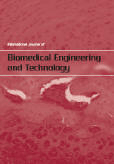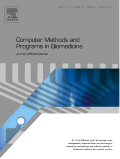
Biomedical Engineering Online
Scope & Guideline
Unlocking the future of healthcare through open-access knowledge.
Introduction
Aims and Scopes
- Biomedical Imaging and Signal Processing:
Research focused on enhancing imaging techniques and developing algorithms for improved diagnostic accuracy, including MRI, ultrasound, and CT imaging. - Tissue Engineering and Regenerative Medicine:
Studies that explore the development of biomaterials and scaffolds for tissue repair and regeneration, including the use of stem cells and growth factors. - Machine Learning and AI Applications:
Utilization of machine learning and artificial intelligence to improve diagnostic processes, predictive modeling, and personalized medicine. - Biomechanics and Rehabilitation Engineering:
Investigations into the mechanics of biological systems and the design of rehabilitation devices to improve patient outcomes in physical therapy. - Wearable and Implantable Technologies:
Development and evaluation of wearable devices and implantable systems that monitor physiological parameters and enhance patient care. - Nanotechnology in Medicine:
Research on the application of nanomaterials and nanoscale techniques for drug delivery, imaging, and diagnostic purposes. - Clinical Applications and Health Informatics:
Studies that integrate engineering solutions with clinical practices to enhance healthcare delivery, including telemedicine and health data management.
Trending and Emerging
- Integration of AI and Machine Learning:
There is a marked increase in studies applying AI and machine learning across various domains, from diagnostics to predictive modeling, indicating a shift towards data-driven healthcare solutions. - Telemedicine and Remote Monitoring:
The rise of telehealth solutions and remote patient monitoring technologies has become a significant focus, especially in light of global health challenges, highlighting the importance of accessible healthcare. - Personalized Medicine and Patient-Centric Approaches:
Emerging research emphasizes personalized treatment strategies that cater to individual patient needs, supported by advancements in genomics and biomarker discovery. - 3D Printing in Healthcare:
The application of 3D printing technology for creating customized medical devices, prosthetics, and even bioprinting tissues is gaining traction, showcasing innovative approaches in biomedical engineering. - Nanomedicine and Targeted Therapies:
There is increasing interest in nanotechnology for drug delivery systems, allowing for targeted treatments that enhance efficacy while minimizing side effects. - Wearable Health Technologies:
The development and application of wearable devices for continuous health monitoring are on the rise, with a focus on real-time data collection and health management.
Declining or Waning
- Conventional Biomechanical Testing:
There appears to be a decline in traditional biomechanical testing studies, as newer methodologies, such as computational modeling and simulations, are increasingly favored. - Basic Materials Science Research:
Research focused solely on the fundamental properties of materials without direct applications in biomedical contexts seems to be declining, with a shift towards applied studies. - Single Modality Imaging Techniques:
The trend is moving away from studies that focus on single imaging modalities, as there is a growing preference for multimodal imaging approaches that provide comprehensive diagnostic insights. - Invasive Surgical Techniques:
There is a noticeable decrease in research focused on invasive surgical methods, as minimally invasive and robotic-assisted techniques gain prominence in clinical practice.
Similar Journals

International Journal of Biomaterials
Driving innovation in biomedical engineering through accessible research.The International Journal of Biomaterials, published by HINDAWI LTD, is a premier platform for disseminating groundbreaking research in the fields of biomaterials and biomedical engineering. With an Open Access approach since 2009, this journal provides unhindered access to innovative studies and applications aimed at advancing medical technologies and improving patient outcomes. Notably ranked in the Q3 category for both Biomaterials and Biomedical Engineering in 2023, it serves as an essential resource for researchers, practitioners, and students alike. The journal's Scopus rankings, including a 49th percentile in Biomedical Engineering and a 40th percentile in Biomaterials, further underscore its growing prominence in the academic community. With contributions spanning from 2011 to 2024, the journal seeks to foster collaborative research and promote developments that enhance the understanding and application of biomaterials in healthcare.

Bio-Design and Manufacturing
Pioneering Sustainable Practices in Bio-DesignBio-Design and Manufacturing, published by SPRINGER HEIDELBERG, is a pioneering journal that stands at the forefront of innovation in the fields of Biomedical Engineering, Biotechnology, Industrial and Manufacturing Engineering, and Materials Science. With its ISSN 2096-5524 and E-ISSN 2522-8552, this journal has established itself as a leading platform for disseminating cutting-edge research and advancements that merge biological principles with manufacturing processes, emphasizing sustainable and efficient practices. It has garnered recognition in the 2023 category quartiles, boasting a Q1 rank in all its relevant fields, which underscores its significance and impact—evident from its prime Scopus rankings that place it within the top percentiles of numerous engineering and materials science disciplines. Researchers, professionals, and students alike benefit from the wealth of knowledge presented in this journal, making it an essential resource for those seeking to enhance their understanding of bio-design applications and innovation in manufacturing processes.

Materials Today Bio
Pioneering research that shapes the landscape of biomedical engineering.Materials Today Bio, published by Elsevier, is an esteemed open-access journal dedicated to advancing the fields of bioengineering, biomaterials, and biomedical engineering. Since its inception in 2019, this journal has quickly made a name for itself, currently ranked Q1 in multiple categories including Bioengineering, Biomaterials, and Biotechnology, reflecting its exceptional quality and relevance in the rapidly evolving landscape of bio-related sciences. With an impressive Scopus ranking positioning it in the top 25% of its categories, Materials Today Bio provides a vital platform for researchers and professionals to share cutting-edge discoveries and innovative applications that bridge the gap between materials science and biological studies. Accessible to a global audience, this journal not only fosters collaboration among the scientific community but also aims to highlight significant advancements in cell and molecular biology, making it an indispensable resource for students and seasoned experts alike. The journal's commitment to open access since 2019 underscores its dedication to disseminating knowledge widely, ensuring that crucial findings reach those who can benefit from them the most.

Progress in Biomedical Engineering
To elevate biomedical solutions for a healthier tomorrow.Progress in Biomedical Engineering, published by IOP Publishing Ltd, is a premier open-access journal that serves as a vital platform for the dissemination of innovative research in the field of biomedical engineering. With an impressive Q1 classification in the Biomedical Engineering category for 2023, this journal has established itself as a significant contributor to the advancement of engineering solutions that improve healthcare outcomes. Recognized for its high-quality and impactful publications, it ranks 51st out of 303 in its field on Scopus, placing it in the 83rd percentile. The journal aims to foster interdisciplinary collaboration and introduce pioneering methodologies and technologies that bridge the gap between engineering and medicine. By providing a pathway for rapid communication of fundamental and applied research, Progress in Biomedical Engineering is dedicated to shaping the future of healthcare technology. Access to its content ensures that researchers, professionals, and students remain at the forefront of biomedical innovation.

ANNALS OF BIOMEDICAL ENGINEERING
Advancing healthcare through engineering innovation.ANNALS OF BIOMEDICAL ENGINEERING is a premier journal in the field of biomedical engineering, published by Springer. Established in 1972, this journal has become a vital resource for researchers, professionals, and students engaged in the rapidly evolving domain of biomedical technology. With a commendable impact factor and ranked in the 76th percentile among its peers as per Scopus, it exemplifies excellence in disseminating critical research findings. The journal covers a broad scope of topics related to the integration of engineering principles with medical and biological sciences, facilitating innovations that enhance healthcare outcomes. Although open access is not offered in this journal, it remains an essential platform for scholarly communication, contributing to the continuous advancement of knowledge in biomedical engineering. ANNALS OF BIOMEDICAL ENGINEERING is not only a bridge for academics to share groundbreaking research but also an influential guide for practical applications in medicine and health technologies, making it a fundamental publication for its readership.

International Journal of Biomedical Engineering and Technology
Pioneering Research in Biomedical Engineering ExcellenceThe International Journal of Biomedical Engineering and Technology, published by INDERSCIENCE ENTERPRISES LTD, serves as a pivotal platform for the dissemination of innovative research in the field of biomedical engineering. This journal, with ISSN 1752-6418 and E-ISSN 1752-6426, has been a valuable resource since its inception in 2007, boasting a converged publication timeline extending to 2024. Based in the United Kingdom, the journal aims to bridge the gap between engineering and biomedical sciences, facilitating interdisciplinary collaboration. As reflected in its 2023 Scopus ranking in the Q4 quartile of Biomedical Engineering, the journal remains accessible for researchers at various stages of their careers, contributing to its significance in promoting advancements in healthcare technologies. While currently not an open-access publication, the journal remains dedicated to enriching the biomedical engineering community by presenting novel research that addresses critical challenges, ultimately aiming to improve patient outcomes and drive innovation in medical devices and therapies.

Cardiovascular Engineering and Technology
Exploring Breakthroughs in Cardiovascular EngineeringCardiovascular Engineering and Technology, published by SPRINGER, stands as a prominent journal in the fields of Biomedical Engineering and Cardiology. With an ISSN of 1869-408X, this journal bridges the gap between engineering innovation and cardiovascular health by exploring the latest advancements pertinent to cardiovascular technologies and therapies. The journal, currently in its converged years from 2010 to 2024, holds important positions in Quartile 3 of both Biomedical Engineering and Cardiology and Cardiovascular Medicine categories, highlighting its relevance and influence in these domains. Ranked in the 59th percentile for Cardiology and 42nd percentile for Biomedical Engineering, the journal is a valuable resource for researchers, professionals, and students keen on understanding the intersection of engineering solutions and cardiovascular medicine. Although the journal is not open access, it remains highly regarded for its rigorous peer-reviewed content that contributes to the advancement of technology in the cardiovascular field.

Computer Methods and Programs in Biomedicine
Bridging the Gap between Technology and Medicine for Better Outcomes.Computer Methods and Programs in Biomedicine, published by ELSEVIER IRELAND LTD, is a leading journal at the intersection of computer science and biomedical research. With an impressive impact factor evidenced by its Q1 rankings in multiple categories—Computer Science Applications, Health Informatics, and Software—this journal ranks highly among peer publications, showcasing its significance in advancing interdisciplinary research. Covering a wide array of topics since its inception in 1985, it is particularly crucial for those invested in the innovation of computational methods applied to the biomedical field. The journal has established a strong reputation, with Scopus rankings placing it in the top percentiles across its relevant sectors, including the 14th position out of 138 in Health Informatics. Researchers, practitioners, and students looking to explore current trends, methodologies, and advancements in biomedical applications of computer science will find this journal an invaluable resource.

BIOMEDICAL ENGINEERING-APPLICATIONS BASIS COMMUNICATIONS
Advancing biomedical innovation through rigorous research.BIOMEDICAL ENGINEERING-APPLICATIONS BASIS COMMUNICATIONS is a prominent journal dedicated to the dynamic field of biomedical engineering, published by WORLD SCIENTIFIC PUBL CO PTE LTD. Since its inception in 1992, the journal has provided a platform for the dissemination of high-quality research and innovative applications within the biomedical engineering domain. Despite its current Q4 ranking in multiple categories such as Bioengineering and Biomedical Engineering, the journal serves as an essential resource for researchers and professionals seeking to explore the latest developments and practical applications in this interdisciplinary field. The journal is based in Singapore, reflecting the region's growing influence in scientific research and technology. Although it does not offer open access, it continues to attract submissions that enrich the scientific dialogue within its community. With a commitment to fostering knowledge and research collaboration, this journal remains a vital contributor to the ongoing advancements in biomedical technology and engineering.

Bioengineering & Translational Medicine
Bridging Bioengineering and Medical BreakthroughsBioengineering & Translational Medicine, published by WILEY, positions itself at the forefront of innovation in the fields of biomedical engineering, biotechnology, and pharmaceutical science. With an impressive impact factor reflected through its top-tier Q1 rankings in multiple categories, the journal serves as a critical platform for disseminating cutting-edge research and stimulating discourse among professionals and scholars since its establishment as an open-access journal in 2016. Key to its mission is facilitating the translation of bioengineering research into tangible medical applications, thereby enhancing healthcare outcomes. With its comprehensive scope, it attracts a diverse readership, including researchers, industry leaders, and students eager to engage with the latest developments in translational medicine. The journal operates under robust access options, ensuring that research is freely available for maximum reach and impact, fostering collaboration and innovation across disciplines worldwide.